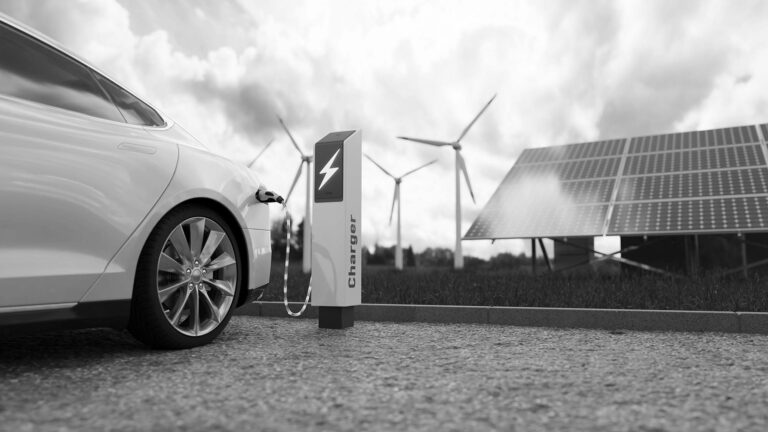Established under the Biden/Harris Administration, the Federal Buy Clean Initiative has been promoting the use of low-carbon, American made construction materials since 2021. The reasoning for this initiative is simple; the Federal Government is the single biggest purchaser on the planet with annual purchasing power of around $630 billion. The Buy Clean initiative works by boosting, not only the sustainable practices of the construction industry, but also the jobs and production facilities across the country. “Through Buy Clean, the Federal Government is for the first time prioritizing the use of American-made, lower-carbon construction materials in Federal procurement and Federally-funded projects. This is advancing America’s industrial capacity to supply the goods and materials of the future while growing good jobs for American workers.”

The need for Buy Clean is simple. According to the Environmental Protection Agency, the U.S. infrastructure and building network requires billions on tons of concrete, asphalt, steel, glass and other construction materials each year. As a result, the construction industry and its associated materials account for around 15% of annual global greenhouse gas emissions. These figures represent the current best efforts of those within the industry to get a handle on a climate crisis that is spiralling out of control. While there are many innovative tools and processes being developed, much of this good work fails due to a lack of financial investment. The EPA however, believes that within the U.S., communities and businesses have the skill and knowhow to turn this around and is set to recharge the sustainable construction sector through a series of strategic grants and awards.
Recent funding was announced as part of the Inflation Reduction Act that will support these efforts. 38 grant recipients across the United States have been chosen to receive funding totalling $160 million in an effort to support the reduction of climate pollution from construction materials. According to those at the EPA, this investment will see large scale development in sustainable practices, research and outcomes. “These transformative awards from President Biden’s Inflation Reduction Act—the largest climate investment in history—will reduce climate pollution by helping businesses measure the carbon emissions associated with extracting, transporting and manufacturing their products.”
“These transformative awards from President Biden’s Inflation Reduction Act—the largest climate investment in history—will reduce climate pollution by helping businesses measure the carbon emissions associated with extracting, transporting and manufacturing their products.”
This is a view that was echoed across Federal Government. According to EPA Deputy Administrator Janet McCabe, America is set to benefit from this investment on a number of fronts. “As America continues to build more and upgrade our nation’s infrastructure under President Biden’s leadership, cleaner construction materials like concrete and steel are increasingly essential for the nation’s prosperity. These historic investments will expand market access for a new generation of more climate-friendly construction materials, and further grow American jobs that are paving the way to the clean energy economy.”
For the grant program, Reducing Embodied Greenhouse Gas Emissions for Construction Materials and Products, the EPA has made awards ranging between $250,000 to $10 million to businesses, universities and non-profit organisations. Selected projects fall under five broad categories such as creating robust data for EPDs and developing uniform standards for PCR. Many of these projects offer new and innovative ways of expanding the knowledge base around sustainability and how the industry can progress with sustainable goals. One such organisation is the Evanston Rebuilding Warehouse. The Warehouse, doing business as the Rebuilding Exchange, is a Chicago-based non-profit with a mission to reuse building materials, reduce construction waste, and train, support, and connect people seeking careers in the building trades. “Rebuilding Exchange is a retail experience on a mission. Our non-profit stores invite the community to discover an ever-changing inventory of incredibly reasonable, often surprising, and sometimes historical building materials and appliances. From reclaimed wood and vintage fixtures to unique architectural pieces and modern appliances, our stores offer a diverse selection of items that cater to both practical needs and creative projects.”

Another hugely significant investment is going to the Hemp Building Institute (HBI). This non-profit organisation provides support for entities that manufacture, remanufacture and refurbish construction materials and products. Biogenic materials from agricultural crops such as hemp, soy, and straw bale provide a unique opportunity to directly address climate change and reduce greenhouse gas emissions from the built environment. The Biogenic Building Materials project will focus on developing EPDs and LCAs for biogenic materials. This project will create a standardized cradle-to-gate PCR for agricultural crop components that will be combined with gate-to-grave, industry-determined PCRs to create a practical EPD generator tool for biogenic building materials. PCRs are cradle-to-gate for agriculture and cradle-to-grave for hempcrete.
In addition to this investment, the EPA is also expanding its technical assistance to businesses and communities that wish to become involved with Buy Clean initiatives. These supports will assist organisations with developing EPDs, a vital step in managing and controlling emissions across the industry. “EPA will initially offer EPD development support and direct businesses to resources to help them measure and reduce the embodied carbon associated with their materials, such as those provided by the ENERGY STAR Industrial program. Federal agencies and their suppliers will be able to compare the climate impact of various materials to drive near-term greenhouse gas emissions reductions. Robust EPD data will be further strengthened by a new label program under development that will identify low carbon construction materials for the growing Buy Clean marketplace.”
Ultimately, this funding is a necessary element to the implementation of manufacturing and prioritising American made, clean products. By providing information to the sector, it can make cleaner choices now and in the future. “We are building a clean energy future in America down to the materials we use, and it’s thanks to the Inflation Reduction Act,” said Senator Tina Smith. “Enabling our businesses to showcase their clean construction materials will open opportunities for more jobs, lower energy costs and create a cleaner environment. The more America leads in the clean energy transition, the more our economy benefits, and the more opportunities come our way.”


















